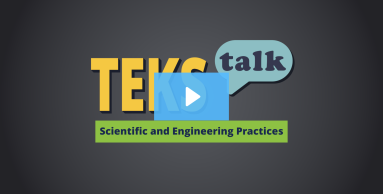
Knowledge and Skills Statement
The further explanation is designed to be a resource for educators that helps them better understand the topic their students are learning. Further explanations may be written at a more complex level than would be expected for students at the grade level.
Sir Isaac Newton was an English mathematician, physicist, astronomer, alchemist, theologian, and author. He was one of the first Europeans to develop physics as a discipline and is a co-creator of calculus. He developed the three Laws of Motion, the Law of Universal Gravitation, and developed the theory of color based on how prisms separate white light into the rainbow. Newton was a key figure in the Enlightenment.
Mae Jemison is an American engineer, physician, and former NASA astronaut. She became the first black woman to travel into space when she served as a mission specialist aboard the Space Shuttle Endeavour. Since leaving NASA, Jemison has been a professor of environmental studies, founded a non-profit organization for students interested in STEM, started a corporation to commercialize the techniques she developed as an astronaut, and collaborated with others to encourage students to understand and pursue agricultural sciences.
Ynes Mexia was a Mexican-American botanist who curated an extensive collection of plants from Colombia, Mexico, and Peru. She also collected specimens in Alaska, especially Mount McKinley National Park. Over her lifetime, she collected nearly 150,000 different specimens. A genus of the sunflower/daisy/aster family has been named after her, along with 50 other new species.
Research
Cox, Carole. 2012. "Meet the Scientist" in Reading Rockets: Literature-Based Teaching in the Content Areas (November 7, 2013). (link unavailable)
Summary: This article explains that teaching children about famous scientists and their responsibilities helps them better understand science's history and how we have all benefited from scientific innovations.
Research
Kruse, Jerrid, and Sarah Borzo. “People Behind the Science.” Posing Investigable Questions: Science and Children 48, no. 4 (December 2010): 51-55.http://www.jstor.org/stable/43175414. Accessed November 29, 2022.
Summary: Students are more likely to be engaged and connected to the science curriculum when discussing historical stories of famous scientists and scientific discoveries. This article explains that students should be introduced to historical science figures and innovations using videos and short stories but should be encouraged to participate in more hands-on activities. It's important to discuss different types of scientists, how they work, and how they may work together to solve problems or make discoveries.
